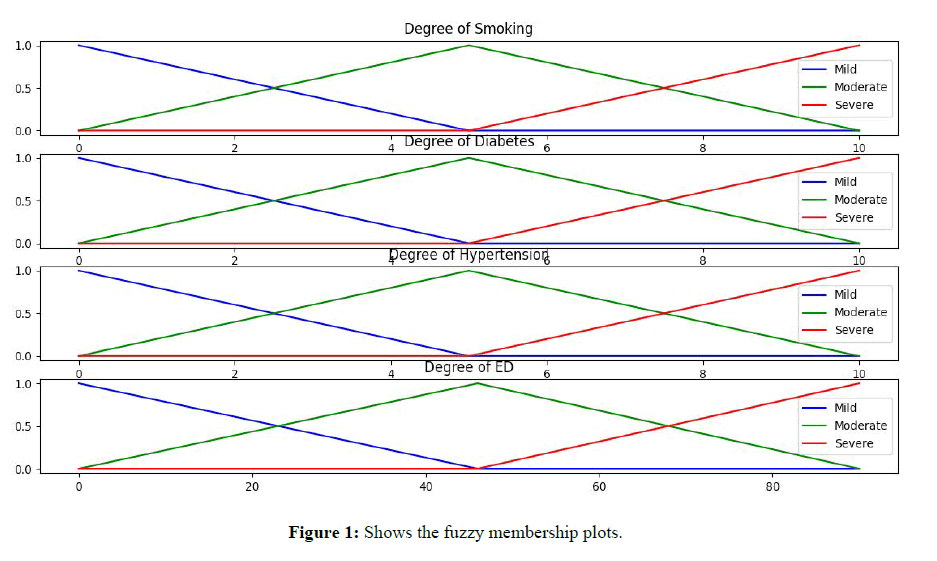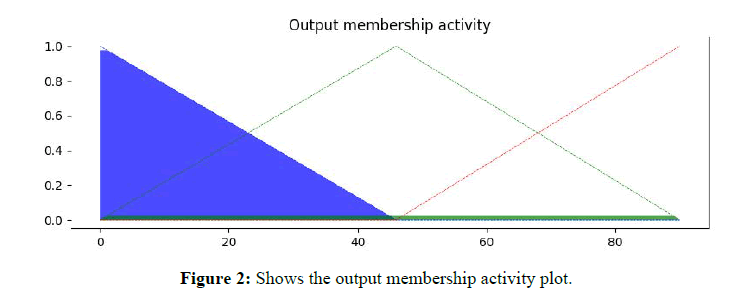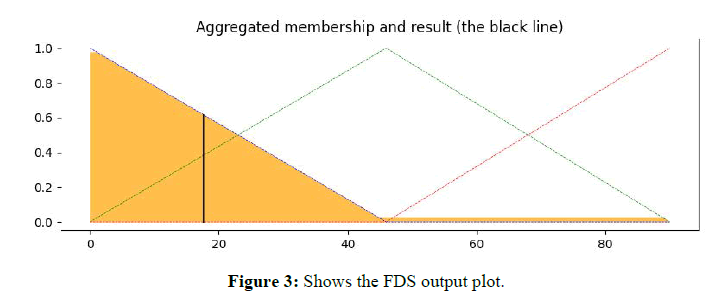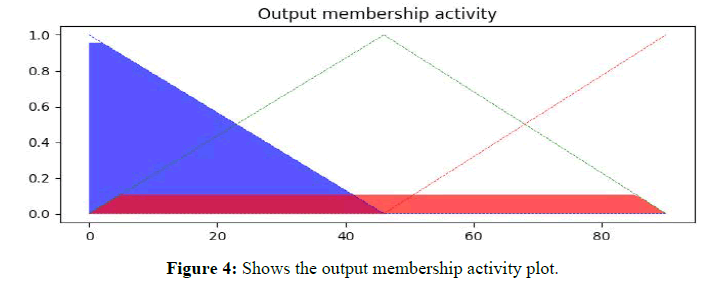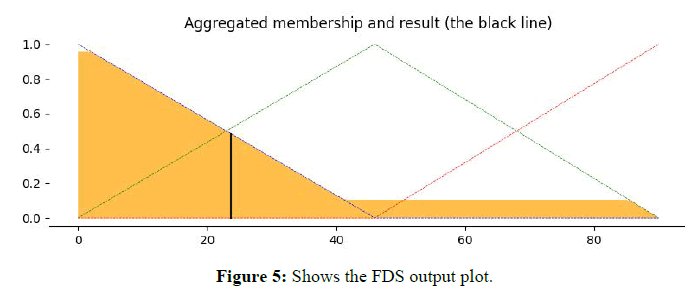Towards Predicting the Grade of Erectile Dysfunction with a Fuzzy Decision System: Application of Artificial Intelligence in Male Sexual Health
Received: 29-Dec-2022, Manuscript No. 72715; Editor assigned: 02-Jan-2023, Pre QC No. 72715; Accepted Date: Dec 29, 2022 ; Reviewed: 16-Jan-2023 QC No. 72715; Revised: 23-Jan-2023, Manuscript No. 72715; Published: 30-Jan-2023, DOI: 10.24105/ejbi.2022.19.1.144-148
Citation: Chattopadhyay S (2023). Towards Predicting the Grade of Erectile Dysfunction with a Fuzzy Decision System: Application of Artificial Intelligence in Male Sexual Health. EJBI. 19 (1):144-148. DOI: 10.24105/ejbi.2022.19.1.144-148
This open-access article is distributed under the terms of the Creative Commons Attribution Non-Commercial License (CC BY-NC) (http://creativecommons.org/licenses/by-nc/4.0/), which permits reuse, distribution and reproduction of the article, provided that the original work is properly cited and the reuse is restricted to noncommercial purposes. For commercial reuse, contact submissions@ejbi.org
Abstract
The incidence and prevalence of male sexual disorders are on a rise. Cigarette smoking, alcoholism, mental illnesses, metabolic diseases, lifestyle issues, and their various combinations are some key causes of it. Erectile dysfunction (ED) is defined as an inability to achieve and maintain an erection for successful sexual intercourse. Sexuality is a taboo across the globe. Therefore, patients suffering from an ED usually skip visiting the doctors and indulge in self-medications, e.g., over-the-counter use of aphrodisiacs and various erection-inducing drugs. As a result, many suffer from serious side effects or even die. This paper aims to predict the grade of ED (dependent parameter) based on the grades of three independent parameters, such as (a) cigarette smoking, (b) diabetes (blood level of HbA1c), Medical/health informatics, and (c) hypertension with a fuzzy decision system (FDS), based on Mamdani’s approach. The engine predicts the risk grade of ED using a fuzzy rule base. Early risk and its grade prediction would be helpful for the clinicians to prevent its progression to a severe degree (irreversible) ED
Keywords
Artificial intelligence, Erectile dysfunction, Cigarette smoking, Diabetes, Hypertension, e-health, Fuzzy decision engine, Fuzzy rules, Mamdani’s approach.
Introduction
The application of artificial intelligence (AI) in healthcare as a diagnostic method is revolutionary but yet to be established with more in-depth research. In the clinical domain, symptoms are often much subjective in nature, e.g., an episode of mild can be expressed as ‘mild’, ‘moderate’, and ‘severe’, and even its combinations, e.g., mild-moderate or moderate-to-severe, etc., which is decoded by the clinicians by assigning some weightage to each based on the clinical rule base that they have gathered during their medical career [1]. Probability theory often fails to address this practical challenge. Therefore, the field of ‘ambiguity’ remains a fertile domain for using AI methods, such as soft computing methods which traditional machine learning approaches may not be suitable to address it [2].
Erectile dysfunction (ED) is defined as unable to achieve or maintain penile erections to accomplish peno-penetrative sex. Several factors, such as poor mental (anxiety disorders, psychoses, depression, etc.) and metabolic health (diabetes, hypertension, obesity, etc.), substance abuse (smoking, alcoholism, cannabis addiction, etc.), sedentary lifestyle, and so forth are some of the key inducers of an ED [3]. Worldwide, about 322 million men are to be suffered from ED by 2025 [4]. Hindrance to cavernous vasodilatation due to vasculopathy and neuropathy is the principal cause of ED. Damage to endothelial and neuronal nitric oxide synthases causes vasculopathy and neuropathy, respectively, restricting cavernous vessels to dilate during sexual stimuli [5]. The damage furthers if no measure is taken. Smoking and hypertension predominantly affects the endothelial nitric oxide synthase [6, 7], while diabetes harms the neuronal nitric oxide synthase that is responsible for nitric oxide production and resultant vasodilatation [8]. Thus, early prediction of the risk and the state of ED can be helpful both for the patients and the clinicians. Unfortunately, the number of ED-grade predicting models does not score much [9], and to the best of the author’s knowledge, to date, no study has been reported that has predicted the EDgrade using FDS.
Fuzzy set and fuzzy logic have been proposed and implemented by Prof. Lotfi A. Zadeh way back in 1965 to solve the issue of uncertainty and literal ambiguity or subjectivity, such as more, less, moderate, mild, severe, etc. in mathematics [10]. The fuzzy set explains the possibility of belongingness by computing the membership grade (0, 1), where ‘0’ is the minimum and ‘1’ is the minimum score. It gives a wider search space than the probability of belongingness which is either ‘0’ i.e., not existing vs ‘1’ i.e., existing. Fuzzy logic is a set of if-then rules, which are used for decision-making. Given input with a fuzzy term, the algorithm defuzzifies it into a crisp value. Using fuzzy rules, the output is predicted. Together, it is called a fuzzy decision system (FDS). There are three types of FDS – Mamdani’s, Sugeno’s, and Tsukamato’s techniques. The first technique uses the center of gravity technique, while the remaining two use the weighted average to defuzzify and compute crisp output [11]. The FDS methods have been used in diagnosing diseases, such as typhoid fever [12], mental illnesses [13], cancers [14], risk of heart disease [15].
Aim and Objective•Designing and developing a Mamdani’s FDS using Python, and
•Predicting the grade of ED in smokers with diabetes and hypertension.
Material and Method
Operating System
Windows 10 Pro, Programming language: Python 3.9 with IDLE editor, Python packages: numpy, matplotlib.pyplot, and scikitfuzzy.
Independent Variables
(a) cigarette smoking [16], (b) diabetes [17], and (c) hypertension [18], each graded as ‘mild’, ‘moderate’, and ‘severe’ as per the respective literature, cited, and the dependent variable: ED [19], having a similar grade system.
FDS Type Chosen
Mamdani’s technique [20], Membership functions (database): Triangular, Grades: mild, moderate, and severe, and Fuzzy rules: IF-THEN linguistic control rules. The knowledge base consists of the rule base and database.
Steps of Mamdani’s FDS Construction
Step-1: setting up the fuzzy rules based on domain expertise
Step-2: crisp input is converted into fuzzy input using the membership function, such as triangular, trapezoidal, Gaussian, and so on
Step-3: computing the strength of the input by combining fuzzified units as per the fuzzy rules
Step-4: combining the rule strength and the output membership function to determine the consequent rule
Step-5: combining all consequents to obtain output distribution, and finally
Step-6: obtaining the defuzzified output that passes through the centroid of the combined consequents or output distribution as the final inference.
Advantages of Mamdani’s FDS:
• Intuitive
• Suitable for human inputs
• The highly interpretable rule base
• Suitable to develop hybrid decision support systems
• Has a wide acceptance.
Parameter Setting:
• Inputs are set on a subjective range of mild, moderate, and severe, ranging between 0 and 10
• Output grade has a range between 0 to 90 in units of percentage points
• The triangular membership function for inputs is ranged as mild <5, moderate as 0 to 10, and severe as >5, hence there are overlapping to accommodate the ‘subjectivity’ involved with the inputs [Fig. 1]
• The triangular membership function for output is ranged from mild <45, moderate from 0 to 90, and severe to>45, thus accommodating the overlapping too [Fig. 1].
Fuzzy rule base: Here, SM = smoking, DM = diabetes, and HTN = hypertension as the antecedents and ED = erectile dysfunction as the consequent. Also, it is important to note that ‘m’, ‘M’, and ‘s’ refers to ‘mild’, ‘moderate’, and ‘severe’, respectively. Below is an example of a set of rules, given arbitrarily by a clinician. The conditions lay after ‘IF’ are the fuzzy antecedents, while those after ‘THEN’ is called the fuzzy consequents.
Rule-1: IF SM is ‘m’ OR DM is ‘m’ OR HTN is ‘m’ THEN ED is ‘m’
Rule-2: IF SM is ‘M’ OR DM is ‘m’ OR HTN is ‘m’ THEN ED is ‘m’
Rule-3: IF SM is ‘s’ OR DM is ‘m’ OR HTN is ‘m’ THEN ED is ‘M’
Rule-4: IF SM is ‘m’ OR DM is ‘M’ OR HTN is ‘m’ THEN ED is ‘m’
Rule-5: IF SM is ‘m’ OR DM is ‘s’ OR HTN is ‘m’ THEN ED is ‘M’
Rule-6: IF SM is ‘m’ OR DM is ‘m’ OR HTN is ‘M’ THEN ED is ‘m’
Rule-7: IF SM is ‘m’ OR DM is ‘m’ OR HTN is ‘s’ THEN ED is ‘M’
Rule-8: IF SM is ‘M’ OR DM is ‘M’ OR HTN is ‘M’ THEN ED is ‘s’
Rule-9: IF SM is ‘s’ OR DM is ‘s’ OR HTN is ‘s’ THEN ED is ‘s’.
It is important to note that classical operators used in the fuzzy rule are AND, often denoted by an ‘&’ is the fuzzy intersection that computes the ‘minimum’ of the membership grades, OR, often denoted by ‘|’ refers to the fuzzy union, which computes the ‘maximum’ of the membership grades, and NOT as the fuzzy additive complement.
Using the rules, the prospective grade of ED has been computed in twoarbitrary cases.
Results
Case-1:
Fig.1 shows the fuzzy membership plots, Fig.2 shows the output membership activity plot, and Fig.3 is self-explanatory where FDS output plots are shown.
Fig. 1 shows the triangular membership plots as mild (blue line), moderate as the green line, and severe as the red line. The x-axis denotes the respective range of inputs [0, 10] and output [0, 95], while the y-axis refers to the membership grades [0, 1].
Fig.2 shows the output membership activity given inputs that exercise the ‘rule 4’.
Fig.3 shows the final crisp output based on the OR operations as per ‘rule 4’ and the crisp output value comes out as 17.63 (denoted by the black line) that passes through the centroid of the area formed by combining all consequents, and the value is closer to a ‘mild’ ED.
Case-2:
Fig.4 shows the output membership activity given inputs that exercise the ‘rule 4’.
Fig.5 shows the final crisp output based on the OR operations as per ‘rule 6’ and the crisp output value comes out as 23.73 (denoted by the black line), which is closer to a ‘mild’ ED as described in Fig. 3 legend.
Similarly, many other cases can also be inferred for the risk of ED, given smoking history, history of diabetes, hypertension, and even many other factors.
Conclusion
Sexual health has still been a taboo in society. Male sexual health, in particular, is a much sensitive issue. Many are ashamed to discuss it even with the doctors. Moreover, taking aphrodisiacs and anti-ED medications over the counter without the doctors’ guidance causes severe side effects. ED-induced anxiety and depression bring down the quality of life. In this paper, three key factors such as smoking, diabetes, and hypertension, and their contribution to ED have been explained by handling the linguistic terms with Mamdani’s FDS. The advantages of this type of FDS are discussed. The FDS has been tested on two arbitrary use cases and found efficient. A full-fledged FDS-based predictive tool can be developed in predicting the ED grades in the vulnerable population for early management.
Conflict of Interest
The author affirms there is no conflict of interest.
Source of Funding
The study has not received funding from any source.
Abbreviations
DM: Diabetes
ED: Erectile Dysfunction
FDS: Fuzzy Decision System
HTN: Hypertension
m: Mild
M: Moderate
S: Severe
SM: Smoking
References
- Chattopadhyay S, Pratihar DK. Towards developing intelligent autonomous systems in psychiatry: its present state and future possibilities. In Intelligent autonomous systems 2010; 143-166.
- Chattopadhyay S, Pratihar DK, De Sarkar SC. Developing fuzzy classifiers to predict the chance of occurrence of adult psychoses. Knowledge-Based Systems. 2008; 21(6):479-497.
- erectile-dysfunction-statistics. 2022.
- McKinlay JB. The worldwide prevalence and epidemiology of erectile dysfunction. Int J Impot Res. 2000; 12(4):S6-S11.
- Tostes RC, Carneiro FS, Lee AJ, Giachini FR, Leite R, Osawa Y, et al. Cigarette smoking and erectile dysfunction: focus on NO bioavailability and ROS generation. J Sex Med. 2008; 5(6):1284-1295.
- Li Q, Yon JY, Cai H. Mechanisms and consequences of eNOS dysfunction in hypertension. J Hypertens. 2015; 33(6):1128.
- Pittilo M. Cigarette smoking, endothelial injury and cardiovascular disease. Int J Exp Pathol. 2000; 81(4):219-230.
- Suresh V, Reddy A. Dysregulation of nitric oxide synthases during early and late pathophysiological conditions of diabetes mellitus leads to amassing of microvascular impedement. J Diabetes Metab Disord. 2021; 20(1):989-1002.
- Xiong Y, Zhang Y, Zhang F, Wu C, Qin F, Yuan J. Applications of artificial intelligence in the diagnosis and prediction of erectile dysfunction: a narrative review. Int J Impot Res. 2022: 1-8.
- Zadeh LA. Fuzzy sets. Inf Control 1965; 8(3):338-353.
- Sari WE, Wahyunggoro O, Fauziati S. A comparative study on fuzzy Mamdani-Sugeno-Tsukamoto for the childhood tuberculosis diagnosis. InAIP Conf Proc. 2016; 1755.
- Samuel OW, Omisore MO, Ojokoh BA. A web based decision support system driven by fuzzy logic for the diagnosis of typhoid fever. Expert Syst Appl. 2013; 40(10):4164-4171.
- Chattopadhyay S, Pratihar DK, De Sarkar SC. Fuzzy-logic-based screening and prediction of adult psychoses: A novel approach. IEEE Trans on Syst Man, and Cybern-Part A: Syst. 2009; 39(2):381-387.
- Miranda GH, Felipe JC. Computer-aided diagnosis system based on fuzzy logic for breast cancer categorization. Comput Biol Med. 2015; 64:334-346.
- Kowsigan M, Jebamalar AC, Shobika S, Roshini R, Saravanan A. Heart disease prediction by analysing various parameters using Fuzzy logic.PJB. 2017 Jun 25; 14(2):157-161.
- Pulvers K, Scheuermann TS, Romero DR, Basora B, Luo X, Ahluwalia JS. Classifying a smoker scale in adult daily and nondaily smokers. Nicotine Tob Res. 2014; 16(5):591-599.
- Mori T, Nagata T, Nagata M, Fujimoto K, Fujino Y, Mori K. Diabetes severity measured by treatment control status and number of anti-diabetic drugs affects presenteeism among workers with type 2 diabetes. BMC public health. 2021; 21(1):1-9.
- Greenland P, Peterson E. The new 2017 ACC/AHA guidelines “up the pressure” on diagnosis and treatment of hypertension. Jama. 2017; 318(21):2083-2084.
- Yafi FA, Jenkins L, Albersen M, Corona G, Isidori AM, Goldfarb S, et al. Erectile dysfunction. Nat Rev Dis Primers. 2016; 2(1):1-20.
- Mamdani EH, Assilian S. An experiment in linguistic synthesis with a fuzzy logic controller. Int J Man Mach Stud. 1975; 7(1):1-3.
Indexed at, Google Scholar, Cross Ref
Indexed at, Google Scholar, Cross Ref
Indexed at, Google Scholar, Cross Ref
Indexed at, Google Scholar, Cross Ref
Indexed at, Google Scholar, Cross Ref
Indexed at, Google Scholar, Cross Ref
Indexed at, Google Scholar, Cross Ref
Indexed at, Google Scholar, Cross Ref
Indexed at, Google Scholar, Cross Ref
Indexed at, Google Scholar, Cross Ref
Indexed at, Google Scholar, Cross Ref
Indexed at, Google Scholar, Cross Ref
Indexed at, Google Scholar, Cross Ref
Indexed at, Google Scholar, Cross Ref
Indexed at, Google Scholar, Cross Ref

